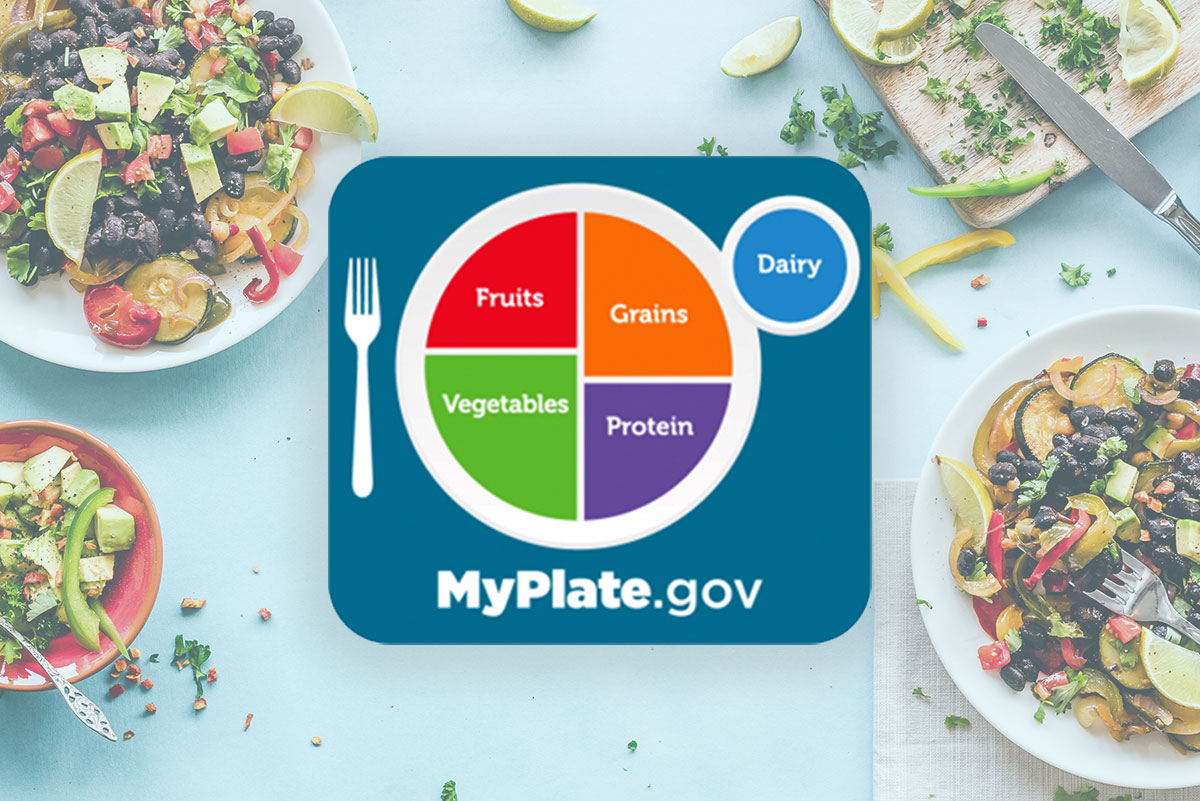Creative Ways to Get Kids to Eat Healthier
July 4, 2023Having a balanced and nutritious diet is important for staying healthy. For kids, it is important for growth and development as well.
Promoting healthy eating behavior to children early on can help them reduce their risk of chronic illnesses later in life. The U.S. Departments of Agriculture and Health and Human Services have released MyPlate as dietary guidelines, and have included infants and toddlers for the first time. This concept suggests that half of our plate should be fruits and veggies. Keep reading to find ways to help children learn to enjoy their fruits and vegetables.
Have fun with shapes and presentation
Do exactly what you tell your kids not to do - play with your food! Cutting fruit and veggies into fun shapes or your kids’ favorite characters can transform eating these foods from a chore into a game. You can use cookie cutters to shape your food of choice. If you don’t have these on hand, you can also try to arrange the fruit and vegetables into “food art” like smiley faces, a garden, or anything your child likes.
Utilize Color
One of the many great things about fruits and vegetables is that they are naturally colorful. Take advantage of the many different colors available in all of the different fruits and veggies. Have a bowl of green, red, and black grapes available for your child to have a colorful grape bowl. The same goes for red, green, and yellow apples. Vegetables like red beets, yellow corn, orange bell peppers and green spinach can be incorporated into an easy, fun-looking salad.
Color is also a way to create what we call a “bridge.” If a child loves corn but hates bell peppers, a parent may try offering yellow corn kernels at the same meal as yellow diced bell peppers. The child understands that yellow is a safe color and may be more willing to try the new food when the safe food is present. Similar shape, color, and size – only the taste and texture are new.
Involve your child in meal preparation
Take your children with you to the grocery store so they can pick out their favorite fruits and vegetables to eat. This allows them to feel more independent in their food choices so that they will enjoy eating their food more. At home, you can assign them age-appropriate tasks to help in meal preparation. This can include washing their fruits and vegetables or simply stirring the pot.
Another way to include your child and make them feel more in control of their meals is to offer instead of serve. This means serving family-style at the table where your child may put their desired food and portion on their own plate. Keep in mind, this is easier for older children and may not be helpful for toddlers.
Make more popsicles and smoothies
Popsicles and smoothies are a quick and easy way to incorporate fruits and vegetables into a child’s diet. Add fruits and Greek yogurt to a blender for a naturally sweet smoothie. The same can be done for vegetables. Adding the vegetable smoothie to a popsicle mold and freezing can make a cold treat. If your child does not like the taste of plain vegetable smoothies, add their favorite fruits to change up the flavor.
Tips to keep in mind
- Remember that fruits and vegetables should be a natural part of the day, just like eating other meals. So, don’t draw unnecessary attention to them by announcing that they should be eaten.
- Be an example to children by eating them normally.
- Vary the fruits and vegetables in your diet to ensure your child does not get bored of the flavors. This can also help expand their palate.
- One way to reduce the pressure of trying new foods at the dinner table would be to offer new foods at snack time in a smaller portion.
- Always, always offer safe foods. If you want to try broccoli this week but your child is obsessed with chicken nuggets and mac and cheese, serve the broccoli at the same time as their most favorite foods. Remember, it may take offering foods 18 or more times before your child willingly wants new fruits and vegetables. It’s okay if their safe foods don’t have a lot of color.
- It is important to remember a child is learning their likes and dislikes and because of how fast they are growing, their brain tells them to go for the sweeter, calorie-dense foods. Ellyn Satter created the “Division of Responsibility” which states parents and kids have different roles at meals. Parents are responsible for what, when, and where at meals but the child is responsible for choosing how much and whether or not they eat at all.
Emphasize the positives
You can promote fruits and vegetables by using phrases like:
- Carrots (or other orange foods) help you see better in the dark and help you get better when you are sick!
- Spinach (or some other green foods) helps grow strong bones and helps you get better when you are sick!
- Blueberries (or other purple foods) make your brain strong and help us think big thoughts!
- Tomatoes (or other red foods) help make a strong heart!
Implementing these strategies can help encourage your child to eat with confidence and trust in you, helping to create a lifelong positive relationship with food, meal time, and you.

